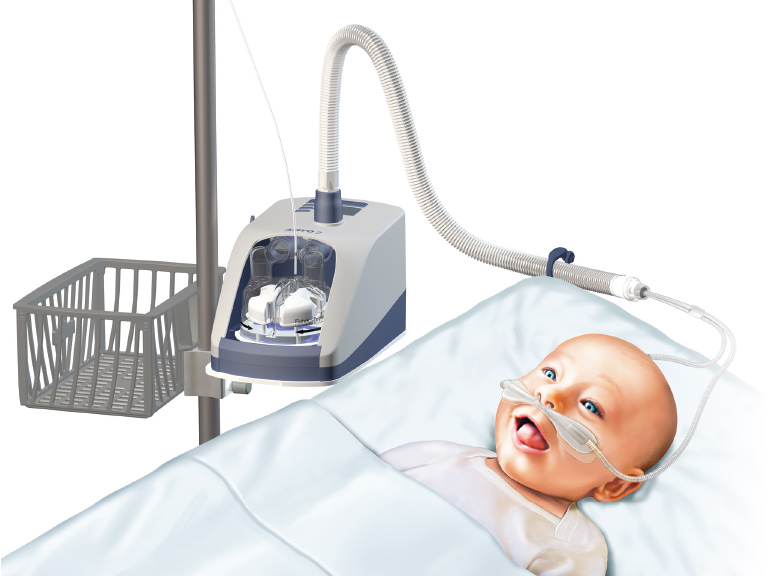New ‘high-flow’ oxygen therapy will improve the treatment of infants with bronchiolitis

New research has shown that a new 'high-flow' oxygen therapy can be safely delivered in emergency departments and general paediatrics wards in both large tertiary children's hospitals and smaller regional centres. The outcome of the study showed that high-flow therapy reduced the need for higher level of care from 23% to 12% in the standard oxygen therapy group.
This is the first study in the world to demonstrate a change in practice that can impact patient outcome and reduce the need to escalate care for infants with bronchiolitis, which would also reduce the cost and burden on hospital care.
The study, published in the prestigious New England Journal of Medicine, involved 17 hospitals across Australia and New Zealand, including researchers from the Murdoch Children's Research Institute (MCRI), the Royal Children's Hospital Melbourne, the University of Melbourne, the Paediatric Critical Care Research Group (PCCRG) located at the Lady Cilento Children's Hospital and the Paediatric Research in Emergency Departments International Collaborative (PREDICT). This collaboration makes it the largest paediatric study in this field worldwide.

Nasal high-flow (NHF) therapy is a simple and easy-to-use oxygen therapy that works by delivering a higher volume of air and oxygen into the nasal passage than standard oxygen delivery methods. This results in an improvement in the work of breathing of infants with bronchiolitis.
Senior author, MCRI's Associate Professor Franz Babl said that NHF therapy has previously only been used in intensive care settings.
"The investigators attempted to test this therapy in general wards, including metropolitan and regional hospitals, with the aim to avoid intensive care admission."
Bronchiolitis is a common viral lung disease in infants with symptoms including cough, runny nose, difficulty breathing and poor feeding. Prior studies using different medications and other interventions have not seen any significant change in outcome or burden on the health care system.
Bronchiolitis in infants
- It is the most common reason worldwide that infants less than 12 months of age are admitted to hospital.
- Up to one in five infants admitted to hospital with bronchiolitis require intensive care.
- It has a high health cost burden worldwide - $US1.7 billion in the United States alone.
- In Australia and New Zealand admissions of children with bronchiolitis account for over AU$40 million in intensive care costs alone each year.
The study involved 1472 patients under 12 months old with bronchiolitis. Infants were randomised 50/50 to one treatment arm and followed throughout their admission. The study compared two oxygen therapies:
Therapy 1 - standard oxygen therapy via nasal cannula
Therapy 2 – high-flow therapy via nasal cannula where a higher volume of air and oxygen is delivered into the nasal passages and results in more efficient delivery of oxygen to the airways and reduces the work of breathing.
"The encouraging results showed us that high-flow therapy can be safely delivered in emergency departments and general paediatric wards. This change in practice will have a positive impact on patient outcome and reduce the need to escalate therapy in bronchiolitis. It likely also reduces the need for affected infants to be transferred from their local hospital to tertiary hospitals," Associate Professor Babl said.
The finding from this study could change standard practice in hospitals caring for infants with bronchiolitis worldwide.



